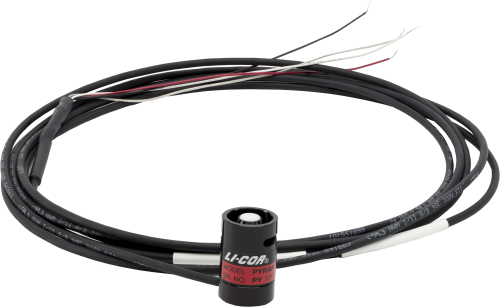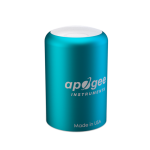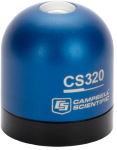
Compatible with most Campbell Scientific data loggers






We recommend the CS320 Digital Thermopile Pyranometer for all new installations. The LI200R-L is available as a replacement part for existing stations/networks that require it.
Overview
The LI200R, manufactured by LI-COR, is a silicon pyranometer that accurately monitors sun plus sky radiation for solar, agricultural, meteorological, and hydrological applications. It uses a silicon photovoltaic detector mounted in a cosine-corrected head to measure solar radiation. A shunt resistor in the sensor’s cable converts the signal from microamps to millivolts, allowing this sensor to be measured directly by a Campbell Scientific data logger.
Read MoreBenefits and Features
- Calibrated against an Eppley precision spectral pyranometer (PSP) for the daylight spectrum (400 to 1100 nm)
- Uniform sensitivity up to 82° incident angle
- Cosine-corrected miniature head
Images








Similar Products
Detailed Description
The LI200R measures incoming solar radiation with a silicon photovoltaic detector mounted in a cosine-corrected head. The detector outputs current; a shunt resistor in the sensor cable converts the signal from current to voltage, allowing the LI200R to be measured directly by Campbell Scientific data loggers.
The LI200R is calibrated against an Eppley Precision Spectral Pyranometer to accurately measure sun plus sky radiation. Campbell Scientific does not recommend using the LI200R under vegetation or artificial lights because it is calibrated for the daylight spectrum (400 to 1100 nm).
Compatibility
Note: The following shows notable compatibility information. It is not a comprehensive list of all compatible or incompatible products.
Data Loggers
| Product | Compatible | Note |
|---|---|---|
| CR1000 (retired) | ||
| CR1000X (retired) | ||
| CR300 (retired) | ||
| CR3000 (retired) | ||
| CR310 | ||
| CR350 | ||
| CR6 | ||
| CR800 (retired) | ||
| CR850 (retired) |
Additional Compatibility Information
Mounts
To ensure accurate measurements, the sensor should be leveled using an LI2003S leveling fixture, which incorporates a bubble level and three adjusting screws. The LI2003S leveling fixture mounts to a crossarm using the CM225 mount. These sensors should be mounted away from all obstructions and reflective surfaces that might adversely affect the measurement.
Data Logger Considerations
The LI200R-L requires one differential analog input channel per probe.
Specifications
| Sensor | Silicon photovoltaic detector mounted in a cosine-corrected head |
| Measurement Description | Measures sun plus sky radiation |
| Spectral Range | 400 to 1100 nm |
| Calibration | ±5% traceable to the U.S. National Institute of Standards Technology (NIST) |
| Sensitivity | 0.13 kW m-2 mV-1 (typically) |
| Linearity | Maximum deviation of 1% up to 3000 W m-2 |
| Absolute Error in Natural Daylight |
|
| Shunt Resistor | 100 Ω, 1%, 50 ppm |
| Stability | < ±2% change over a 1-year period |
| Response Time | < 1 μs |
| Temperature Dependence | ±0.15% per °C maximum |
| Cosine Correction | Cosine corrected up to 82° angle of incidence |
| Operating Temperature Range | -40° to +65°C |
| Relative Humidity Range | 0 to 100% |
| Detector Description | High-stability silicon photovoltaic (blue enhanced) |
| Sensor Housing Description | Weatherproof anodized aluminum case with acrylic diffuser and stainless-steel hardware; O-ring seal on the removable base and cable assembly |
| Diameter | 2.36 cm (0.93 in.) |
| Height | 3.63 cm (1.43 in.) |
| Weight | 84 g (2.96 oz) |
Documents
Brochures
Manuals
Articles and Press Releases
Newsletter Articles
Privacy Policy Update
We've updated our privacy policy. Learn More
Cookie Consent
Update your cookie preferences. Update Cookie Preferences


